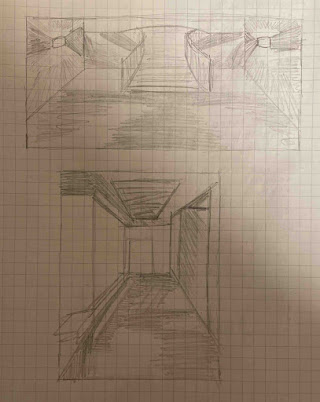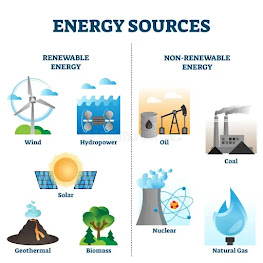Electrical Systems and Lighting
INT 322 - Building Systems
Weekly Summary
This week we read Chapter 5 and learned about Electrical Systems and Lighting. Lighting is such an important part of interior design, and the book made an effort to point out that even the best interiors can be ruined by bad lighting. Lighting affects the mood of the space and impacts not only the physical comfort but also the psychological comfort of a space. Lightings sets the mood, whether that is relaxation, productivity, spaciousness, or a sense of privacy.
Electricity is typically provided though a utility company and travels to each of the buildings we use on a regular basis. The powerlines we see everywhere are electricity's means of travel - these are both overhead and underground. The science behind electricity is quite complex and in-depth, but it was interesting to grasp even a bite-size of more knowledge on the subject. Photometry is the science behind light and can be studied in-depth.
Electricity is a sustainability issue, and reducing used energy is the common goal; it's important to consider energy efficiency in design. Maximizing the use of sunlight is key, and a common mistake by designers is unnecessarily over-lighting a space. Light is one of the largest heat loads in an interior, so reducing light also reduces the amount of air conditioning needed. There are a variety of affects to consider sustainability-wise including the number of lumens per watt, light trespass, and light pollution. There are many recommendations for sustainable lighting choices; the Green Seal's Recommendations are a great resource. Sustainable, energy-efficient design is feasible and many features such as sensors (both automatic and vacancy) can reduce the amount of unnecessary light being used at certain times.
 A variety of lamps (incorrectly known as "bulbs") have their pros and cons. Incandescent light is a popular residential choice, dimmable, with a warm appearance, at a rather inexpensive price; however, sustainability concerns have reduced its popularity. Halogen is a type of incandescent light with a warm-white appearance, and strong focused beams of light; it is often used to illuminate display items and artwork. Fluorescent light is primarily commercial, energy-efficient, and economical; however, its sustainability concerns include its use of mercury and its disposal. High Intensity Discharge (HID) is great for outdoor settings like streets and landscapes, but also for interiors such as parking garages, factories, and big-box stores. Light Emitting Diodes (LED) is an energy-efficient solution with a long-lasting life; however, it does have some color consistency concerns, and is still being studied.
A variety of lamps (incorrectly known as "bulbs") have their pros and cons. Incandescent light is a popular residential choice, dimmable, with a warm appearance, at a rather inexpensive price; however, sustainability concerns have reduced its popularity. Halogen is a type of incandescent light with a warm-white appearance, and strong focused beams of light; it is often used to illuminate display items and artwork. Fluorescent light is primarily commercial, energy-efficient, and economical; however, its sustainability concerns include its use of mercury and its disposal. High Intensity Discharge (HID) is great for outdoor settings like streets and landscapes, but also for interiors such as parking garages, factories, and big-box stores. Light Emitting Diodes (LED) is an energy-efficient solution with a long-lasting life; however, it does have some color consistency concerns, and is still being studied.
Color as it pertains to lighting can be measured by the Correlated Color Temp. (CCT), Color Rendering Index (CRI), and Chromaticity Chart. Calculations for the number of fixtures needed in a space can be calculated by three methods: the Simple Lumen Method (quick), Watts per Sq. Ft. Method (preliminary and quick), or the Lumen Method (long, but most accurate).
When designing the lighting plan for a space, it's important to study the spaces, figure out the best type of lighting, the amount of lighting needed, and the best fixtures for your design. The steps are 1) Programming, 2) Schematic Design, 3) Design Development, 4) Construction Documents. Lighting plans and specifications should be clearly communicated to the contractor, and one of the necessary elements of communication is a Reflected Ceiling Plan.
Lighting Study - Sketches
I picked two photos with different kinds of lighting and high points of emphasis seen by the number of unique shadows. Through these two photos alone, you can see that lighting can be used to emphasis circulation or even a design concept itself. For example, I love that in the first photo/ sketch, you can see the reflection of the stairs through the use of lighting; the grand staircase is emphasized in the shadows on the floor. I enjoyed seeing the different types of fixtures used in both drawings and I think they are great precedents for lighting design. Shadows play a large role in the apparent design of a space, and therefore the lighting must be positioned and designed intelligently.







Delia,
ReplyDeleteIt's great to see your excitement for this week's look into Electrical Systems and Lighting. Your observations on the significance of lighting in interior design and its relationship to sustainability are bang on. Your breakdown of several lighting solutions, together with their benefits and drawbacks, is both informative and entertaining. Your critical examination of the lighting designs demonstrated your good awareness of how lighting can genuinely transform a space. Nice job!
Great job! 50/50 points
ReplyDelete